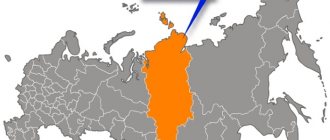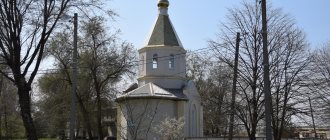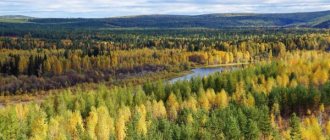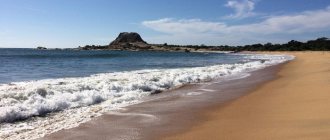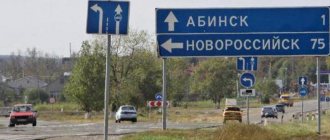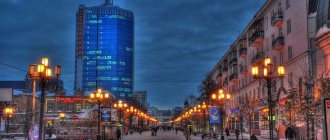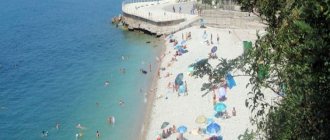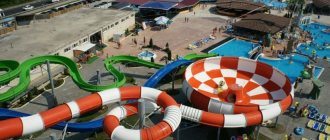What holiday is it today?
December 16, 2021, Thursday
Today are holidays, events: Events that happened on December 16 in the world, in different years Tomorrow: Day of Strategic Missile Forces Day of Employees of the State Courier Service Memorable date in the military history of Russia: Capture of the Ochakov fortress in 1788
Today is the Orthodox holiday of the Prophet Zephaniah. Reverend Savva of Storozhevsky, Zvenigorod. Martyr Angelis... Tomorrow: Great Martyr Barbara and Martyr Juliania of Iliopolis. Venerable John of Damascus...
Today is a national holiday: Day of World Silence and Silence... Tomorrow: Barbarian Day...
[edit] Notes
- [1]
- [2]
- [3]
- [4]
- [5]
- Krasnodar. Retail real estate. November 2020
- Krasnodar. Retail real estate. November 2020
- Krasnodar. Retail real estate. November 2020
- [6]
| Subjects of the Russian Federation | |
| Central Federal District | Belgorod region • Bryansk region • Vladimir region • Voronezh region • Ivanovo region • Kaluga region • Kostroma region • Kursk region • Lipetsk region • Moscow region • Oryol region • Ryazan region • Smolensk region • Tambov region • Tver region • Tula region • Yaroslavl region • Moscow |
| Northwestern Federal District | Karelia • Komi • Arkhangelsk region • Nenets Autonomous Okrug • Vologda region • Kaliningrad region • Leningrad region • Murmansk region • Novgorod region • Pskov region • St. Petersburg |
| Southern Federal District | Adygea • Kalmykia • Crimea • Krasnodar region • Astrakhan region • Volgograd region • Rostov region • Sevastopol |
| North Caucasian Federal District | Dagestan • Ingushetia • Kabardino-Balkaria • Karachay-Cherkessia • North Ossetia • Chechnya • Stavropol Territory |
| Volga Federal District | Bashkortostan • Mari El • Mordovia • Tatarstan • Udmurtia • Chuvashia • Perm region • Kirov region • Nizhny Novgorod region • Orenburg region • Penza region • Samara region • Saratov region • Ulyanovsk region |
| Ural Federal District | Kurgan region • Sverdlovsk region • Tyumen region • Khanty-Mansi Autonomous Okrug • Yamalo-Nenets Autonomous Okrug • Chelyabinsk region |
| Siberian Federal District | Altai • Tyva • Khakassia • Altai Territory • Krasnoyarsk Territory • Irkutsk Region • Kemerovo Region • Novosibirsk Region • Omsk Region • Tomsk Region |
| Far Eastern Federal District | Buryatia • Yakutia • Trans-Baikal Territory • Kamchatka Territory • Primorsky Territory • Khabarovsk Territory • Amur Region • Magadan Region • Sakhalin Region • Jewish Autonomous Region • Chukotka Autonomous Okrug |
Source - ""
Category: Krasnodar region
Seasons
Seasons, four periods of the year (spring, summer, autumn and winter) characterized by certain average temperatures. The period during which the Sun passes through one of these sectors is called the season. Spring in the Northern Hemisphere and autumn in the Southern Hemisphere begin when the Sun passes through the initial circle of declination and its right ascension is 0° (vernal equinox). Summer in the Northern Hemisphere and winter in the Southern Hemisphere occur when the sun's right ascension is 90° (summer solstice). Autumn in the Northern Hemisphere and spring in the Southern Hemisphere begin when the sun's right ascension is 180° (autumnal equinox). The beginning of winter in the Northern Hemisphere and summer in the Southern Hemisphere is considered to be the winter solstice, when the direct ascension of the Sun is 270°... Next: Seasons. Russian folk calendar. Monthly words...
Greater Caucasus
Within the Krasnodar Territory, mountains occupy approximately a third of its total territory. They begin as low hills in the vicinity of Anapa and extend in a south-easterly direction right up to the border with Abkhazia, gradually gaining height. In the area of the resort city of Sochi, the height of the Caucasus Mountains already reaches 3000 meters above sea level.
The Greater Caucasus Mountains are part of the young Alpine-Himalayan fold belt. The northern slopes of the ridge are flatter than the southern ones, which drop steeply to the sea. The central part of the Caucasus Mountains is composed of ancient rocks (gneisses, granites, diorites), and the slopes are composed of younger rocks (mainly limestones, sandstones, dolomites and marls).
The highest point of the Greater Caucasus within the Krasnodar Territory is Mount Tsakhvoa. It is located in the Mostovsky district and crowns the Herzen Ridge. On the northern slope of the mountain lies one of the largest glaciers in the region with an area of 2.5 square meters. km. Other famous peaks of the Krasnodar region are Chugush, Akaragvarta, Oshten and Fisht.
Folk calendar about every day
Every day one season always replaces another and this determines a person’s way of life. In connection with this, a folk calendar was formed in which there were practically no nameless, unmarked days. Every day was special, had its own purpose. All this was determined by climate conditions and astrological phenomena.
A calendar is a system for counting periods of time. The first calendars arose a long time ago, in ancient times, because there was a need to measure time. The word calendar comes from the Latin words caleo - to proclaim and calendarium - debt book. This is due to the fact that in Ancient Rome the beginning of each month was especially proclaimed, and because it was customary to pay debts on the first day of the month. Different peoples counted time differently. Some calendars are based on the changing phases of the moon - lunar calendars; in others - the change of seasons - sunny; in others, the length of the year was coordinated with the change of seasons, and the counting of months was associated with the phases of the Moon. Such calendars are called lunisolar.
In Rus', the calendar was called a monthly calendar. Every day, the month book covered the entire year of peasant life, “describing” day by day, month after month, where each day had its own holidays or weekdays, customs and superstitions, traditions and rituals, natural signs and phenomena. The cyclical nature of the calendar is reminiscent of human life, where spring is youth, summer is heyday, autumn is the time of harvesting fruits (it’s good if there are some, otherwise you can live your life without collecting fruits), winter is the time of wisdom and peace. This cyclicality and rhythm determined the way of life of the farmer. The folk calendar was an agricultural calendar, which was reflected in the names of the months, folk signs, rituals and customs. Even the determination of the timing and duration of the seasons is associated with real climatic conditions. Hence the discrepancy between the names of the months in different areas... Next: Folk calendar...
Flag of the region
Since the spring of 1995, a flag of 3 horizontal stripes of blue, crimson and green has been used as a flag ( where the outer stripes are 2 times narrower than the central one). In the center is a golden-colored coat of arms (depending on the date of manufacture of the flag, the coat of arms may have an old or new look). The color combination of the cloth corresponds to the symbolism of the Kuban Cossacks.
Fishing calendar for every day
The fishing calendar should not be taken as an absolutely indisputable truth. Fish biting is greatly influenced by a whole range of natural factors, as well as the influence on the nature of man himself. You must not forget that the fish’s bite depends and is determined not only by the calendar dates and biological cycles of their life, reflected in the calendar, but also, no less, by the state of their habitat; the bite also depends on weather conditions: air and water temperatures, cloudiness, wind direction and strength, etc... Next: Fishing calendar...
Nationalities
Conducted in 2002 and 2010. All-Russian population censuses made it possible to determine the national composition of the inhabitants of the territory; the data (in% of the total) are presented in the table . The reporting did not include citizens who refused to indicate their nationality or found it difficult to answer. Nationalities numbering less than 0.1% of the total population are not listed.
| Nationality | Data 2002, % | Data 2010, % |
| Russians | 86,3 | 88,2 |
| Ethnic Cossacks | 0,3 | 0,1 |
| Armenians | 5,4 | 5,5 |
| Ukrainians | 2,6 | 1,6 |
| Greeks | 0,5 | 0,4 |
| Belarusians | 0,5 | 0,3 |
| Tatars | 0,5 | 0,5 |
| Georgians | 0,5 | 0,3 |
| Ethnic Germans | 0,5 | 0,2 |
| Adyghe people | 0,4 | 0,3 |
| Turks | 0,3 | 0,2 |
| Azerbaijanis | 0,3 | 0,2 |
| Gypsies | 0,1 | 0,3 |
| Ossetians | 0,1 | 0,1 |
Orthodox calendar about every day
Orthodox calendar: Orthodox, Church and Christian holidays.
The church year is an alternation of weekdays and holidays. On weekdays, a person is called to work “by the sweat of his brow to earn his bread.” Holidays are given in order to feel liberation, to rise above the bustle and routine of the world, to feel involved in the highest of worlds, “where there are no illnesses, sorrows and sighs, but endless life.” Since ancient times, holiday cycles have been associated with the seasons. The pagans associated them with the worship of the forces of nature, the cult of which in the Old Testament was replaced by gratitude to the Creator for the universe. And although the connection between holidays and the seasons has not completely lost its power, since God is present in everything, in the plant and animal world, in human works, it nevertheless faded into the background, giving way to a spiritual foundation built on the Sacred Scriptures. The history of Orthodox holidays dates back to the times of the Old Testament. Each of the Orthodox holidays is dedicated to the remembrance of the most important events in the life of Jesus Christ and the Mother of God, as well as the memory of saints... Next: Orthodox calendar...
Natural attractions of the region
In between sea swimming and sunbathing, guests of the Krasnodar region have the opportunity to visit many interesting natural sites. Here is a list of the main and most visited natural attractions in this region:
- Agur waterfalls.
- Sochi Arboretum.
- Reserve "Sadki" with lotus plantations.
- Mount Fisht.
- Canyon of the Mzymta River.
- Canyon of the Beshenki River.
- Big Azish Cave.
- Guam Gorge.
- Lake Kardyvach.
- Tizdar mud volcano.
Diverse terrain, mild climate, the presence of mountains and the sea coast - all these factors attract a huge number of tourists to the Krasnodar region. It’s not for nothing that the country’s main summer resorts – Sochi, Anapa, Gelendzhik, Yeisk and others – are located here.
Russian folk calendar for every day
The word “sign” comes from the word “notice”, i.e. observe. As a result of observing what happens around a person every day, he accumulates life experience. This knowledge was passed down from generation to generation, carefully preserved and people trusted it as a sacred book. Many signs have come to us from the depths of centuries without losing their knowledge. Each of us is free to choose: to dismiss all this as an absurd superstition or to take a closer look at the signs and take the centuries-old experience of generations more seriously. Most of us, when taking exams, ask them to scold them, boasting about some kind of good fortune or luck, spit so as not to jinx them or knock on wood, take a detour if a black cat crossed the road, are afraid of the number 13 and much more. And who among us does not have lucky things, numbers? Who has never resorted to the help of fate at least once in their life, who has not believed in secrets? It’s as if everything connected with signs is hidden somewhere deep in our subconscious. Often we remember them mechanically, unconsciously, or just as a joke. But, undoubtedly, the signs contain a lot of accurate knowledge and practical wisdom of our ancestors. They cover all the characteristic, often difficult to perceive, natural phenomena. Signs have preserved a lot of what was in old folk holidays and customs; they help predict the weather, grow crops... Next: Folk signs...
Main city
The capital is Krasnodar (called Ekaterinodar until 1920), built on the right bank of the Kuban River. The city is located at a distance of 120 km from the Black Sea coast, the distance from Moscow is 1300 km (by road, in a straight line - 1192 km). The number of residents, including suburbs, at the beginning of 2021 is more than 1022 thousand.
The city was founded as a fortified area at the end of the 18th century and received its original name in honor of Empress Catherine II, who donated land for the construction of the first fortress.
Holiday calendar, dates and events of the year
All state and professional holidays in Russia, including significant World and International holidays, and other equally interesting holidays and events about every day.
The holiday has always kept pace with the history of mankind. Social time can be divided into three types: everyday life (weekdays), weekends and holidays. Everyday life is a series of practices repeated day after day and every day (work). Weekends are regular breaks from the rush of everyday life. It is believed that on weekends a person should restore his strength after working days. Day off, non-working day. A holiday is a day of celebration established in honor or in memory of someone or something. A day or series of days celebrated by the church in memory of a religious event or saint... Next: Calendar...
Transport
The region has a developed transport network, represented by:
- airports capable of receiving large aircraft;
- highways of federal and local subordination;
- railways belonging to the North Caucasus branch of Russian Railways;
- seaports providing import and export of various goods and raw materials.
Air
The region, with its center in Krasnodar, is distinguished by a developed network of airports united under the auspices of the BAZEL Aero group. Airfields in Krasnodar (among the top 10 largest in Russia in terms of passenger flow), in the cities of Anapa and Sochi are classified as international, and there are local airfields in Gelendzhik and Yeisk.
Automotive
The following roads pass through the territory :
- federal highway M4 , connecting the capital of the Russian Federation with the cities of Krasnodar and Novorossiysk;
- highways P217 , A290 and 147 , allowing car to travel both within the region and to get to cities in neighboring regions;
- local highways A146 , A148 and P253 .
Railway
Railway tracks on the territory of the entity with region code 23 are the property of Russian Railways. There are transit routes that allow you to transport goods and people to neighboring territories and regions , as well as to the Republic of Crimea. There is a narrow-gauge Absheronskaya road, used for the delivery of goods and of interest to tourists.
Water
Krasnodar Territory with region number 23 , which has access to the Black and Azov Seas, has a developed water transport network. The port cities of Yeisk, Taman, Anapa, Novorossiysk and a number of others are located in the coastal zone. Ports account for about 40% of Russian freight transport by sea and river routes. The region is a major transshipment point on the route of Russian oil exports.
Prayer book, Orthodox prayers for every day
Prayer is the most powerful means for healing all illnesses - both physical and mental. Prayers can be laudatory or grateful, petitionary and repentant. If we have offended God, sinned, we must ask Him for forgiveness, that is, repent. Such prayers are called repentant prayers. If everything is fine with us, if we and our loved ones are healthy and prosperous, if we have a place to live, something to wear, something to eat, we must glorify and thank God for this. Such prayers are called praise or thanksgiving. If some misfortune, illness, trouble or need happens, you need to ask God for help. Such prayers are called petitionary... Next: Orthodox prayers...
Azov-Kuban Plain
The plain extends from the coast of the Azov Sea and the Kuban valley to the northern administrative borders of the Krasnodar Territory. Another name for it is found in the literature – the Kuban-Azov Lowland. It is based on the young Scythian plate with a rather thick sedimentary cover. Therefore, the main rocks of the lowland are clays and loess-like loams.
The Azov-Kuban Plain slopes to the northwest. In this direction, its absolute heights gradually decrease from 250 to 0 meters. On the shores of the Sea of Azov, the landscape of the plain is complicated by numerous branches of the Kuban delta, estuaries, flood plains and marshy areas of land.
There are natural gas deposits in the northwestern part of the plain.
Zodiac, astrological, eastern calendar. Zodiac signs
In ancient times, to establish the calendar, priests used knowledge of the positions of all the planets. Before the reform of Peter 1, the New Year was celebrated on the Day of the Autumn Equinox. On this day, according to ancient legend, the most peaceful treaty was concluded between the Great Race (ancient Slavs) and the Great Dragon (ancient Chinese) and it was approximately 7518 years ago... For the ancient Slavs, the calendar month corresponded to the lunar cycle from new moon to new moon, taking into account such Thus, the relationship of the entire annual cycle with astronomical and natural phenomena. There was no coherent calendar system. The main natural phenomena are still considered to this day to be the days of the solar equinox and solstice - the Slavic holidays Maslenitsa, Kupala, Ovsen and Kolyada. But during the time of Peter 1, all ancient Slavic calendars were abolished and a new Western European calendar from the Nativity of Christ (Julian calendar) was introduced, while the beginning of the calendar was moved to January 1. The Julian calendar (old style) did not take leap days into account and accumulated one extra day every 128 years. After the October Revolution in 1918, the Gregorian calendar (new style) was introduced in Russia, according to which an amendment of 13 days was introduced. The calendar of the ancient Slavs was based on two planets: the Sun and the Moon. And now they don’t use anything at all. The calendar has become static. There is no such thing as the calendar, it turns out, resting on some planet. Nobody even knows about it. There are just some standard numbers, there are months and holidays. The calendar is based on the Sun and Moon. Why is this so? Because these two luminaries influence the Earth. The Earth revolves around the Sun, and the Moon revolves around the Earth. And these two luminaries create the atmosphere on the planet. From here the calendar is built... Next: Astrological calendar...
Coat of arms of the region
The coat of arms contains a green central shield with an image of a fortress, behind is a golden shield with a black imperial eagle. On top of the shields is a stylized princely cap , and along the lower edge there is a double ribbon of the Order of Lenin (introduced in 2004). For the image on the flags, a simplified version of the coat of arms is used (golden color with black ornaments).
Dream books online, interpretation of dreams
A dream book is nothing more than an interpreter of dreams and dreams, a translator of dreams. Since ancient times, people have been using dream books; dreams have always been given great importance, and people have often noticed the prophetic properties of some dreams. The dream book can become your faithful assistant every day and throughout your life, thanks to the dream interpreter you can always make the right decisions, the dream book will help you resist temptations in time, and will warn you against wrong steps and frivolous actions. Further…
Content
- 1 Geography
- 2 Population
- 3 Economy 3.1 Industry 3.1.1 Electric power
- 3.1.2 Mechanical engineering
- 3.1.3 Forestry and wood processing industry
- 3.1.4 Fuel industry
- 3.1.5 Food industry
- 4.1 Video

